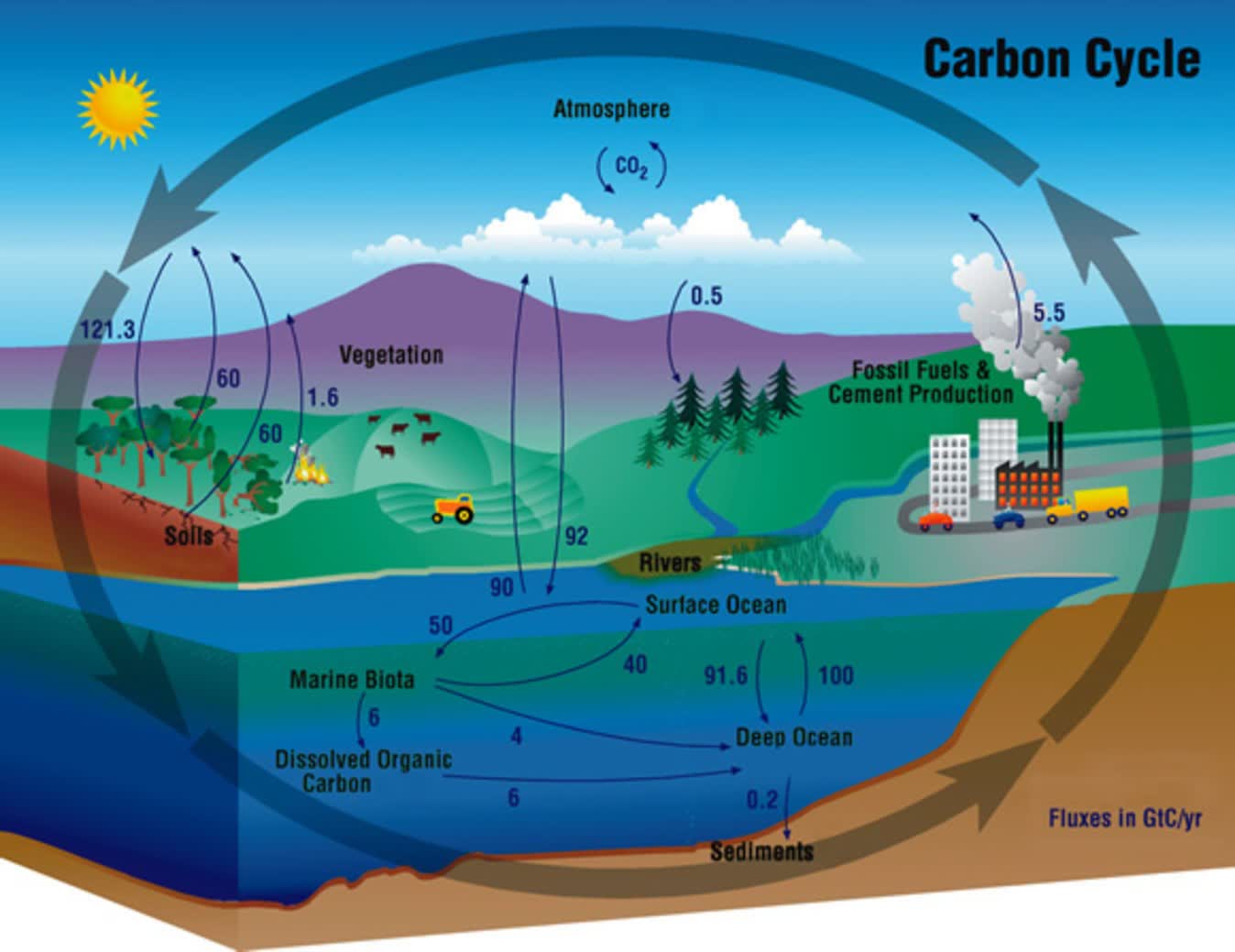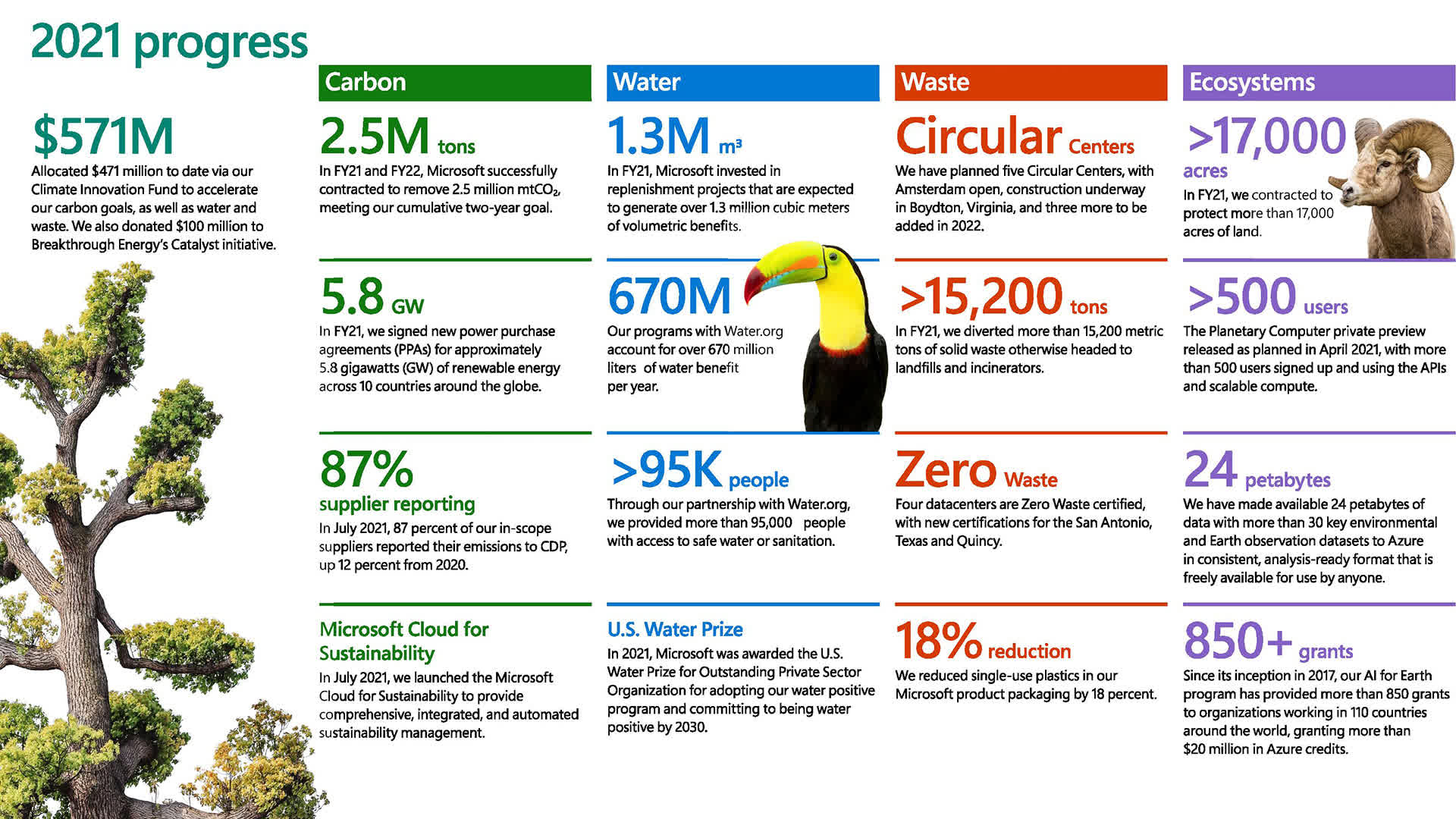Why it matters: Microsoft builds anywhere from 50 to 100 new data centers around the world each year to support cloud-based technologies and services. Each center contributes to an enormous and constantly growing carbon footprint, one that the software giant previously pledged to eliminate by the year 2030. It may sound like a tall order, but the tech titan may have a fighting chance thanks to some new little green friends.
Back in 2020, Microsoft announced its commitment to achieving a "carbon-negative" operating status by 2030. The company updated the world on their carbon elimination efforts in 2021, having funded the elimination of more than a billion tons of carbon dioxide from the environment. Despite the removal, the company found that some of their emissions targets, namely scope 3 emissions, were still on the rise.
Scope 3 emissions, which are emissions a company is indirectly responsible for but not produced directly by, are extremely hard to control. Microsoft has enlisted the help of Running Tide, an ocean health restoration company specializing in carbon cycle conversion, to help offset the impact of these emissions and move closer to their carbon-negative goal.
Running Tide's solution is based on moving carbon from what is know as the fast carbon cycle to the slow carbon cycle. The fast cycle, which keeps carbon circulating between our oceans and atmosphere, is completed in a handful of years, allowing the carbon level circulating in our atmosphere to remain high. The slow cycle can take hundreds to millions of years to complete, keeping the carbon trapped in the cycle and out of our atmosphere for much longer periods.

Running Tide attempts to convert the carbon cycle by deploying specialized carbon buoys comprised of limestone and forest matter hundreds of miles from the shore. These algae-seeded buoys are then left to dissolve, helping to preserve the ocean's alkalinity as the buoy breaks down. The seeded algae begins to grow, removing CO2 from the atmosphere via photosynthesis.
The buoys eventually degrade enough to lose buoyancy and sink to the ocean floor. Once deep enough, the carbon is then held down by the enormous water pressure of the ocean, buried under ocean sediment, or consumed by aquatic life. According to Running Tide, this conversion activity and the immense pressure of the ocean above keeps the carbon trapped and out of atmospheric circulation for hundreds, and sometimes millions, of years.
The proposed solution sounds good in theory, but the technology is young and currently undergoing further testing. In an interview with TechCrunch, Running Tide's Jordan Breighner stated the company has only removed less than 1,000 tons of carbon in test and research deployments, and has a larger goal of removing more than 12,000 tons of carbon on behalf of Microsoft over the next two years.

